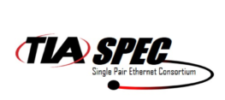Industrial Ethernet communications technology is continuing to morph and adapt to the demands of a future Internet of Things (IoT) world with the ongoing development of Single Pair Ethernet (SPE) and IEEE 802.3cg standards. Developments within the automotive industry are identified as a key driver of the technology with the use of Ethernet for vehicle cameras, diagnostics and security expanding into potential solutions for driverless technology.
IEE 802.3 Ethernet Standards
The goal of new SPE technology is to connect devices at 10 Megabits per second over up to at least 1,000 meters, and offer the option of Power over Data Lines technology (PoDL) for remote power that would be especially useful in hazardous environments.
According to a new Belden white paper, Single Pair Ethernet (SPE) technology together with Time Sensitive Networking (TSN), offers a new, unique SPE protocol for encoding and scrambling data, enabling industrial and process networks to achieve lower electromagnetic interference (EMI), lower cost, reduced cabling weight, and higher bandwidth.
“One lighter, thinner cable that is still capable of Power over Data Lines (PoDL) and that will have a signal and power reach up to 1000 meters is arriving now. This will be one cable and one network type that any sensor or actuator can get power from, and any sensor or actuator can talk to,” the report stated.
Another key advantage of the move to single twisted pair is that is offers an ability to reuse existing cables, and especially Foundation H1, HART, PROFIBUS PA and 4-20mA connections. Benefits include an enormous installed base of Single Twisted Pair, usually shielded and sometimes certified, in the field. Lengthy fieldbus cables are expensive to install (often in filled conduit) and end nodes would be easier to replace.
Read more at Design News.

